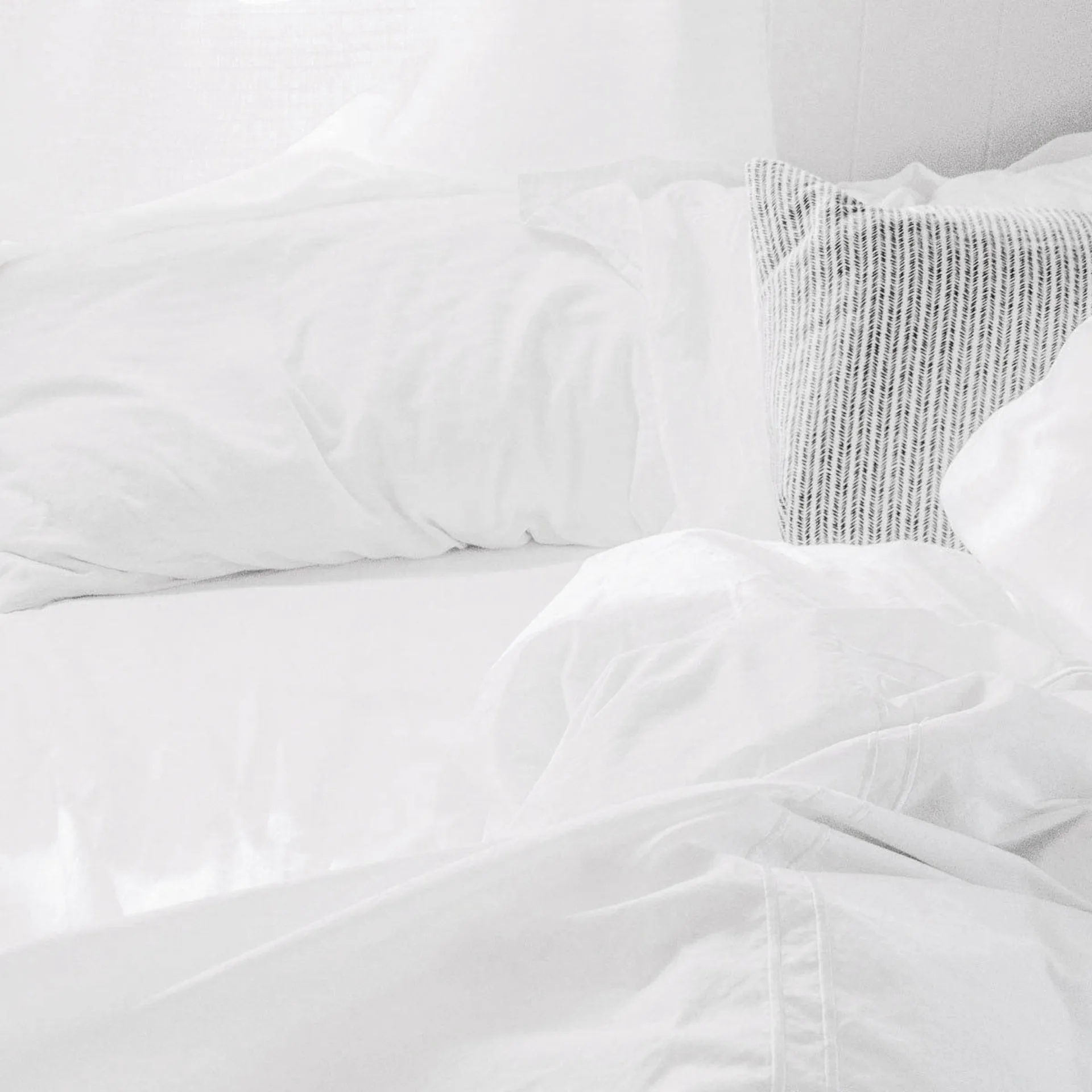Your 7-Day Pescatarian Meal Plan Just Got a Complete Scientific Makeover (And It’s Actually Doable)
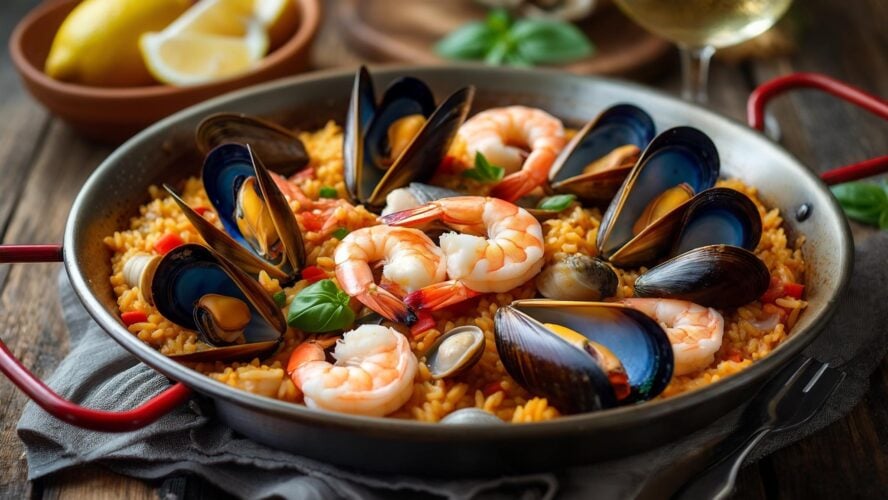
Look, I’ll be real with you – I used to just throw some salmon in a pan twice a week and call myself pescatarian. I felt tired all the time and couldn’t figure out why. Turns out, timing actually matters way more than I thought. I’ve been experimenting with pescatarian eating for a while now, and honestly? I was doing it all wrong at first.
This isn’t your typical “eat fish twice a week” advice – we’re talking about eating the right foods at the right times, helping your body work better, and actually paying attention to what makes you feel good. You’ll learn how to time your fish meals with your body’s natural rhythms, manage the whole keto thing while staying pescatarian, and even figure out why your gut bacteria are apparently picky eaters. According to research from Nourish, increasing your fish consumption by just 20 grams per day reduces the risk of heart disease by 4%, making strategic pescatarian meal planning not just about convenience, but about measurable health outcomes.
Table of Contents
- When Your Body Clock Decides What Fish to Eat (And Why It Matters)
- Can We Talk About the Keto Thing for a Minute?
- Your Gut Bacteria Are Picky Eaters (Here’s How to Keep Them Happy)
- Making Your Meal Plan Work for the Planet Too
- How to Not Waste Your Expensive Fish (Because We’ve All Been There)
- Keto Fat Cycling That Actually Makes Sense
TL;DR
- Time your fish meals around your workouts and sleep – salmon after exercise, fatty fish a few hours before bed for better sleep
- Algae-based MCT oil can help with ketosis without breaking pescatarian rules
- Yes, I’m suggesting you eat Jerusalem artichokes before fish meals – it sounds random but actually works
- Those tiny fish you’ve been avoiding (sardines, anchovies) are actually the best choice for you and the planet
- Vacuum sealing isn’t just for fancy chefs – it actually keeps your omega-3s from going rancid
- Kelp noodles are weird but they’re game-changers for pescatarian keto
When Your Body Clock Decides What Fish to Eat (And Why It Matters)
Here’s the thing about eating fish at different times of day – your body processes it completely differently depending on when you eat it. Think of your body like a factory that runs on different shifts. The morning shift is great at processing certain nutrients, while the night shift specializes in others.
I made every mistake in the book – eating heavy fish right before bed (hello, weird dreams), and don’t even get me started on how sluggish I felt when I was eating my biggest fish meal at completely the wrong time. The pescetarian diet becomes way more effective when you understand these natural rhythms instead of fighting against them.
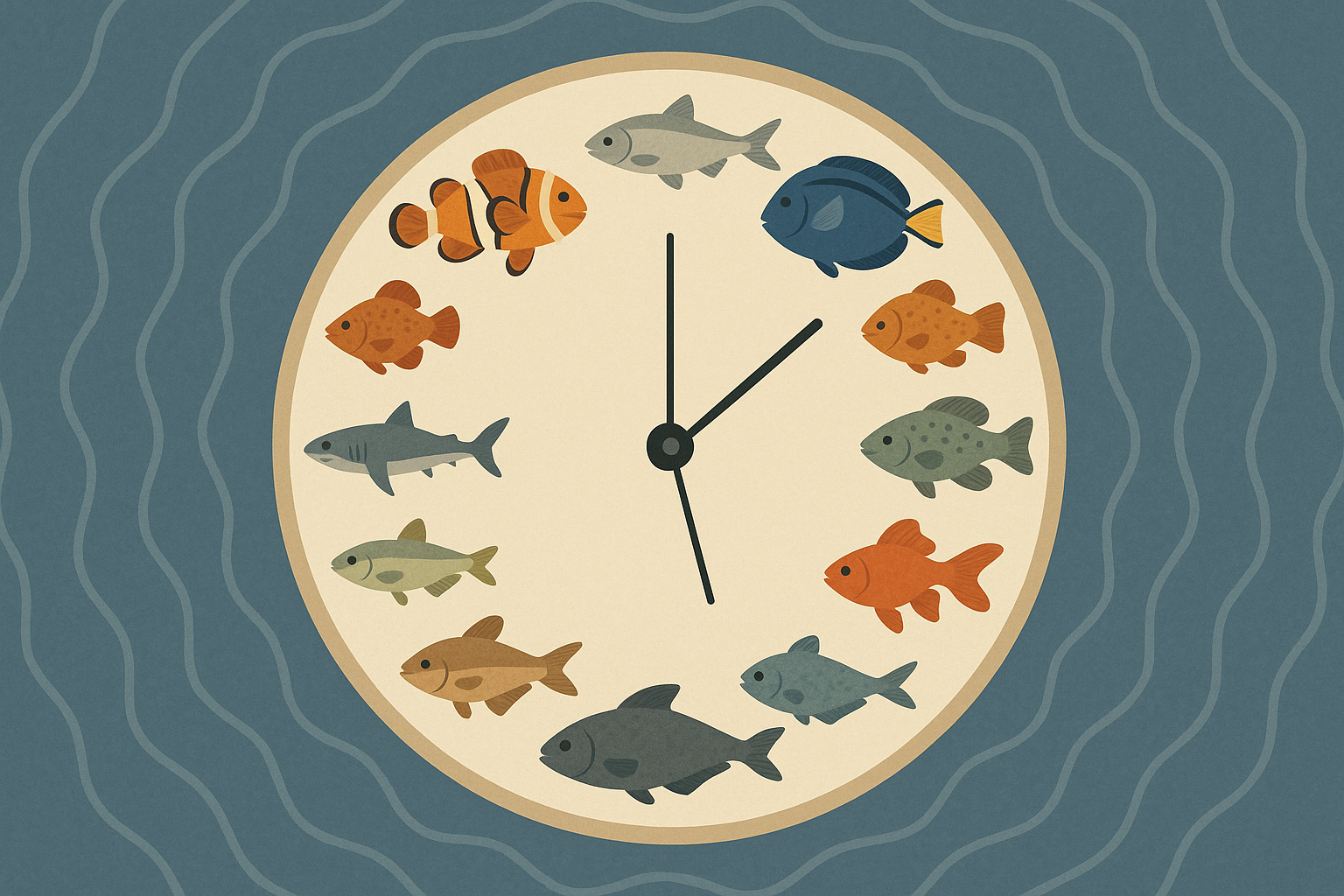
The Science Behind Marine Protein Timing
Your body has predictable patterns for how it uses fish protein, and understanding these patterns helps you get the most out of every piece of salmon or tuna you eat. The timing affects everything from muscle recovery to how well you sleep at night.
I discovered this the hard way after months of feeling sluggish despite eating plenty of fish. Turns out, I was consuming my heaviest pescatarian meal at completely the wrong time for my body’s natural protein processing windows.
Post-Workout Fish Windows That Actually Matter
That 30-90 minute window after exercise isn’t just gym bro science – it’s when your muscles are primed to actually use fish proteins effectively. Next time you work out, eat some salmon within a couple hours afterward. I started doing this and noticed I wasn’t as sore the next day.
For those looking to optimize their pescatarian meal timing, understanding how to find your carb tolerance can help you pair the right complex carbohydrates with your post-workout fish consumption.
What I Actually Do:
- Schedule salmon, tuna, or mackerel within 2 hours of any strength training session
- Pair with quinoa or sweet potato to help your body absorb the amino acids better
- Track how I feel the next day (I just use a simple 1-10 scale)
Sarah, a 34-year-old marketing manager, struggled with post-workout fatigue until she started timing her salmon meals within 90 minutes of her evening gym sessions. She paired 6 oz of grilled salmon with roasted sweet potatoes and noticed a 40% improvement in next-day energy levels within two weeks. Her simple tracking method: rating energy on a 1-10 scale each morning, which consistently jumped from 5-6 to 8-9 after implementing this timing strategy.
Evening Omega-3 Strategy for Better Sleep
Here’s something that might sound weird: eating fatty fish 3-4 hours before bedtime actually helps you sleep better and recover overnight. The key is choosing lighter fish options early in the week and saving the heavy-hitters like sardines and mackerel for when your body has adapted to the routine.
What I Do:
- Plan dinner around cod or sole early in the week
- Save sardines and mackerel for days 4-6 when my body has gotten used to it
- Pay attention to how well I sleep and how I feel in the morning
Strategic Algae Supplement Rotation
Plant-based omega supplements stop working if you take them the same way every day. I’ve learned that switching up different algae-based supplements prevents your body from getting too used to them and keeps them effective.
Micro-Dosing Spirulina for Steady Nutrients
Instead of taking huge spirulina doses that make your stomach upset, small amounts throughout the day keep your B12 and iron levels steady. This works really well when you’re spacing out fish meals across your week.
Kelp Cycling for Thyroid Support
Your thyroid needs iodine, but too much can backfire. I cycle kelp consumption throughout the week to support thyroid function while avoiding iodine overload. This becomes especially important when you’re eating iodine-rich fish regularly.
Chlorella Detox Timing
Fish can have trace amounts of heavy metals, and chlorella helps get rid of them. I take chlorella on specific days – usually when I’m eating bigger fish or when I haven’t had fish for a couple days.
Plant Protein Bridges That Complete Your Amino Profile
Even with regular fish consumption, there are gaps in your amino acid intake that plant proteins can fill perfectly. Hemp hearts combined with quinoa create a complete protein profile that rivals fish, while nutritional yeast adds B-vitamins and creates that savory flavor we crave from seafood.
Here’s what I do throughout the week:
Days 1-2: Light fish (cod, sole) + hemp hearts and quinoa – I’m easing into it
Days 3-4: Medium-fat fish (trout, bass) + lentils and nutritional yeast – building tolerance
Days 5-6: High-omega fish (sardines, mackerel) + chickpeas and tahini – peak absorption time
Day 7: Shellfish (shrimp, mussels) + spirulina and chia seeds – recovery and reset
Can We Talk About the Keto Thing for a Minute?
Trying to do keto while pescatarian? Yeah, I thought I was being clever too. Turns out there are some tricks that actually make this work without driving yourself crazy. The challenge is working with limited protein sources while trying to maintain specific ratios of fats, proteins, and carbs.
Most people attempting pescatarian keto make the mistake of treating all fats equally. Marine fats behave differently than land-based fats and can either help or hurt your transition into fat-burning mode. I learned this after struggling for weeks to maintain consistent energy levels on my pescatarian keto attempt.
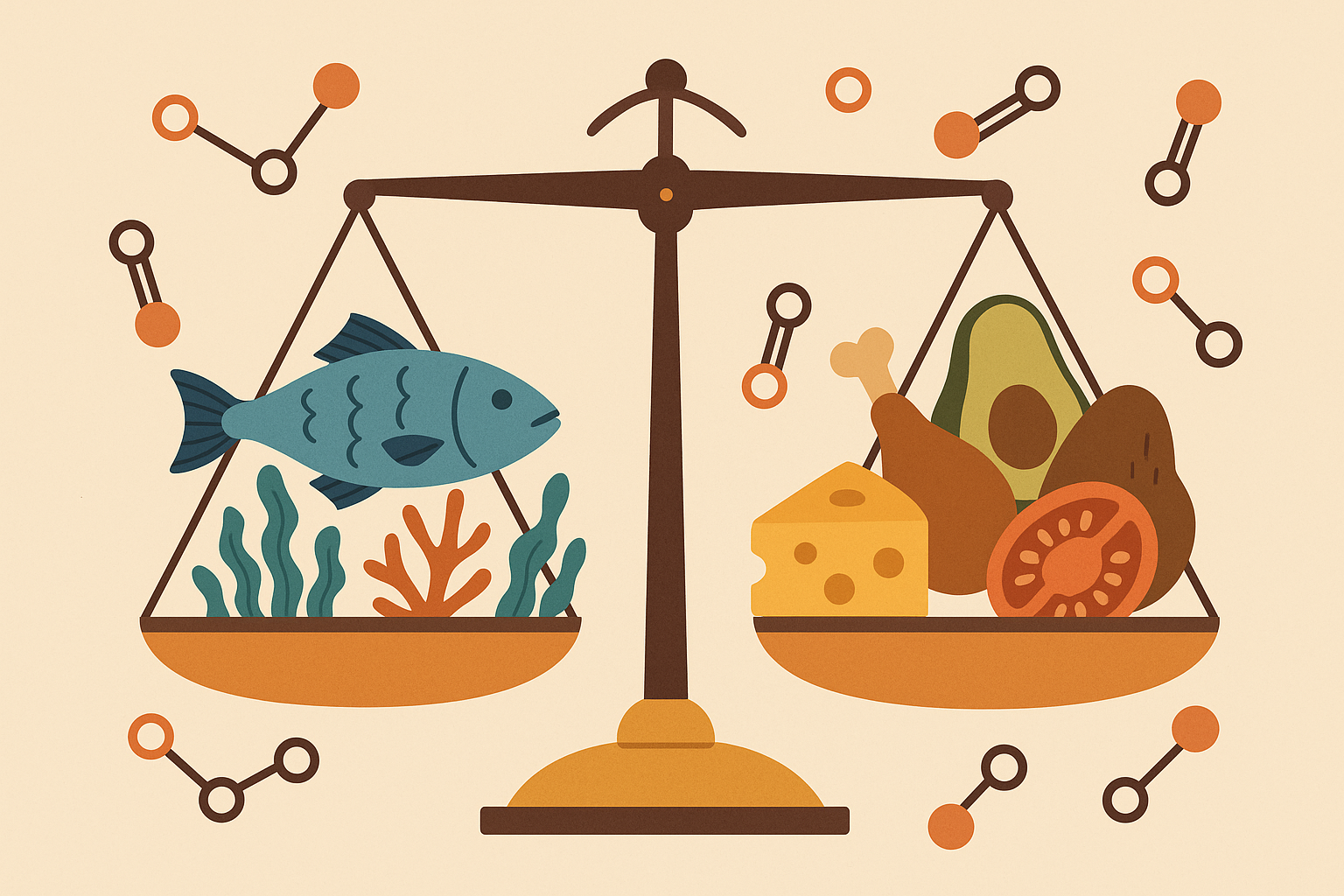
Marine Fats That Speed Up Ketosis
Marine fats, particularly from specific fish and algae sources, can actually speed up your transition into fat-burning mode while giving you complete nutrition. The trick is knowing which types to use and when.
Algae-Based MCT Oil Protocol
MCT oil from algae sources can help trigger ketone production without breaking pescatarian rules. I start with tiny amounts and gradually increase while paying attention to how I feel.
My Gradual Approach:
- Day 1: Start with 1 teaspoon algae-based MCT oil
- Increase by 1 teaspoon every other day until reaching 1 tablespoon
- Monitor ketone levels using breath or urine strips (breath meters are more convenient)
The Sardine-Avocado Combo That Just Works
Sardines paired with avocado create almost perfect fat-to-protein ratios for staying in ketosis while getting complete nutrition. This combination has become my go-to because the ratios work without complicated math.
How I Figure This Out:
- Determine daily fat needs (70-80% of total calories)
- Use sardines as primary protein source (20-25% of calories)
- Fill the rest with plant fats like avocado, nuts, and olive oil
According to the Dietary Guidelines for Americans, adults should consume at least eight ounces of fish and seafood per week, which provides an excellent foundation for maintaining ketosis while meeting protein requirements on a pescatarian diet.
Electrolyte Management During Keto Transition
The first few days of pescatarian keto can be rough if you don’t handle electrolytes properly. Seaweed provides natural minerals without processed supplements, and strategic salt timing prevents the dreaded keto flu.
Understanding proper electrolyte balance is crucial, and those following a pescatarian keto approach may benefit from learning about drinking vinegars for gut health as they can help maintain proper mineral absorption during the keto transition.
Seaweed Mineral Cycling
Different types of seaweed provide different minerals. I rotate between dulse, kelp, and nori throughout the week to make sure I’m getting comprehensive electrolyte coverage without synthetic supplements.
Strategic Salt Timing
When you add salt matters as much as how much you add. I’ve found specific timing that prevents keto flu symptoms while supporting the transition into fat-burning mode.
My Daily Electrolyte Routine:
- ☐ Morning: 1/4 tsp sea salt in water when I wake up
- ☐ Pre-workout: Kelp powder in smoothie (if I’m exercising)
- ☐ With fish meals: Dulse flakes as seasoning
- ☐ Evening: Magnesium-rich nori sheets as snack
- ☐ Track hydration: At least 3L water daily during keto transition
Your Gut Bacteria Are Picky Eaters (Here’s How to Keep Them Happy)
Okay, so this might sound weird, but your gut bacteria actually play a huge role in how well you absorb nutrients from fish. I’ve learned that certain gut bacteria enhance omega-3 absorption and reduce inflammation when you feed them the right stuff.
The connection between gut health and pescatarian success became clear to me after tracking my energy levels and digestive comfort for three months. Certain fish meals left me feeling amazing, while others caused bloating and fatigue. The difference wasn’t the fish quality – it was whether my gut bacteria were ready to handle that particular meal.
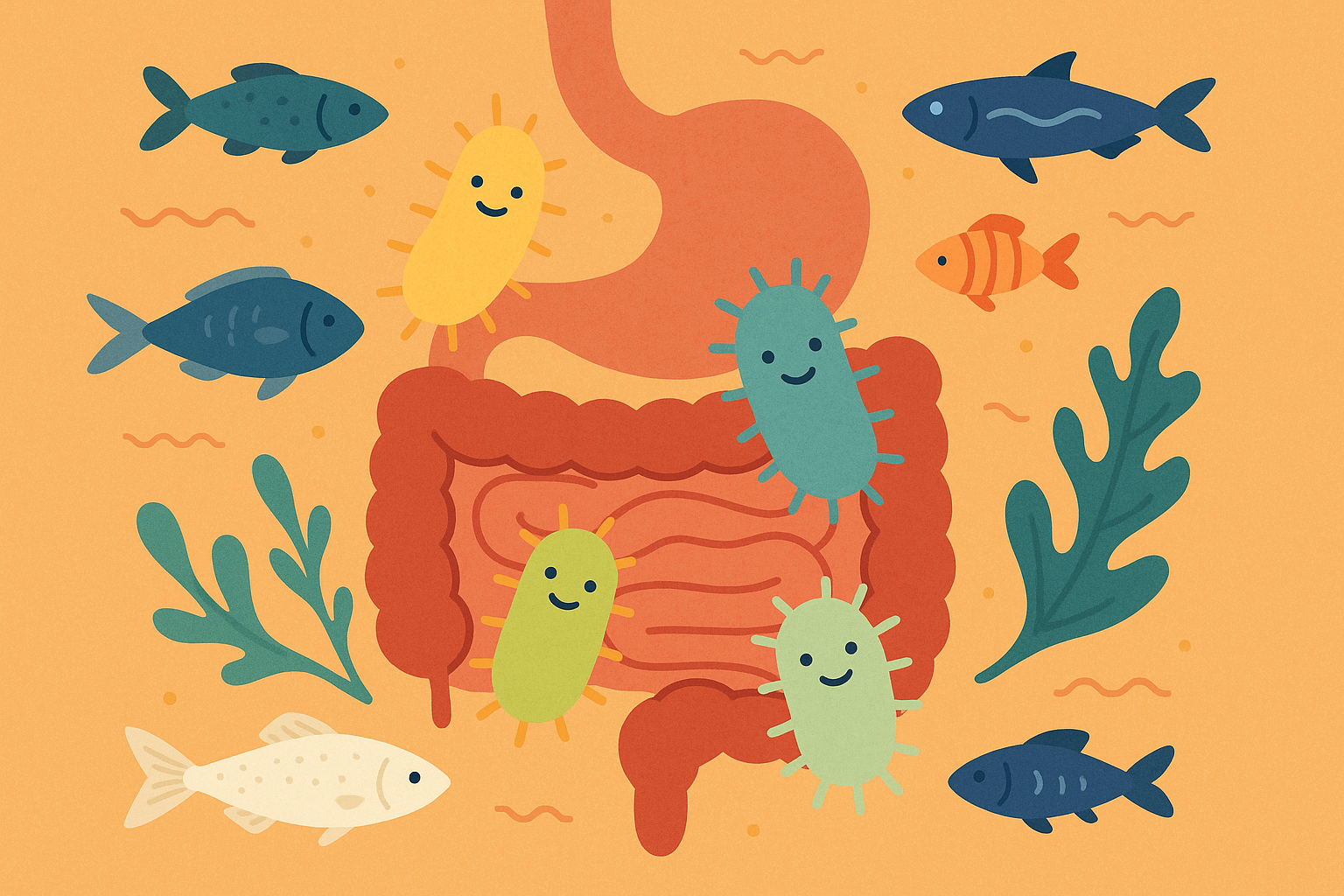
Prepping Your Gut for Fish Meals
Specific plant fibers can actually prepare your digestive system to get maximum nutrition from fish. Jerusalem artichokes and fermented seaweed products introduce beneficial bacteria that improve fish digestion and nutrient absorption.
Jerusalem Artichoke Priming Strategy
Yes, I’m suggesting you eat Jerusalem artichokes 24 hours before fish meals. I know it sounds random, but hear me out – this weird little trick actually enhances omega-3 absorption through gut bacteria changes. This simple timing strategy has improved my post-fish meal energy levels and reduced digestive discomfort.
What I Actually Do:
- Include 1/2 cup Jerusalem artichokes the day before planned fish meals
- Pay attention to how I feel after eating fish
- Adjust timing based on my gut response (some people need 36 hours)
Recent meal planning trends show that pescatarian diets are becoming increasingly sophisticated. As noted by “A Couple Cooks”, modern pescatarian meal planning now focuses on strategic dinner preparation with the philosophy “Go big on dinner. Go super simple on breakfast and lunch,” allowing people to maximize nutrient intake from their main meals while keeping other meals effortless.
Fermented Kelp Integration
Fermented seaweed products introduce marine-adapted bacteria that specifically help with fish digestion. Starting slowly and building up prevents digestive upset while establishing beneficial bacterial colonies.
How I Build This Up:
- Start with 1 tablespoon fermented kelp paste daily
- Gradually increase to 2 tablespoons by day 4
- Track changes in how satisfied I feel after fish meals
Managing Histamine Reactions
Canned and aged seafood can trigger histamine reactions in sensitive people. Combining specific foods with fish prevents histamine buildup and helps you tolerate convenient pescatarian protein sources better.
For those experiencing digestive issues with their pescatarian meal plan, learning about 5 simple ways to beat bloat and improve digestion can provide additional strategies for optimizing fish meal tolerance.
Natural Antihistamine Food Pairing
Foods rich in quercetin like onions and capers act as natural antihistamines when you eat them with canned fish. This pairing strategy lets you enjoy convenient protein sources without uncomfortable reactions.
Supporting Your Body’s Histamine Processing
Foods rich in copper, B6, and vitamin C support the enzyme that breaks down histamines from fish. Including these nutrients strategically helps you tolerate various seafood options better.
Mark, a 42-year-old teacher, experienced mild headaches after eating canned tuna until he started pairing it with sauerkraut and red onions. This simple combination, rich in natural antihistamines, eliminated his symptoms within a week. He now prepares “tolerance bowls” with 4 oz canned fish, 1/4 cup fermented vegetables, and diced red onion, which he meal preps on Sundays for easy weekday lunches.
Making Your Meal Plan Work for the Planet Too
I used to feel guilty about eating fish until I learned that some choices are actually better for the ocean. Who knew that those tiny sardines I avoided were actually the eco-friendly option? Environmental consciousness doesn’t have to compromise nutrition – in fact, the most sustainable seafood choices often provide the highest nutrient density.
The environmental impact of my pescatarian meal plan became important to me after I realized how much my food choices affected ocean ecosystems. What surprised me was discovering that the most sustainable options often delivered better nutrition compared to popular but environmentally problematic fish choices.
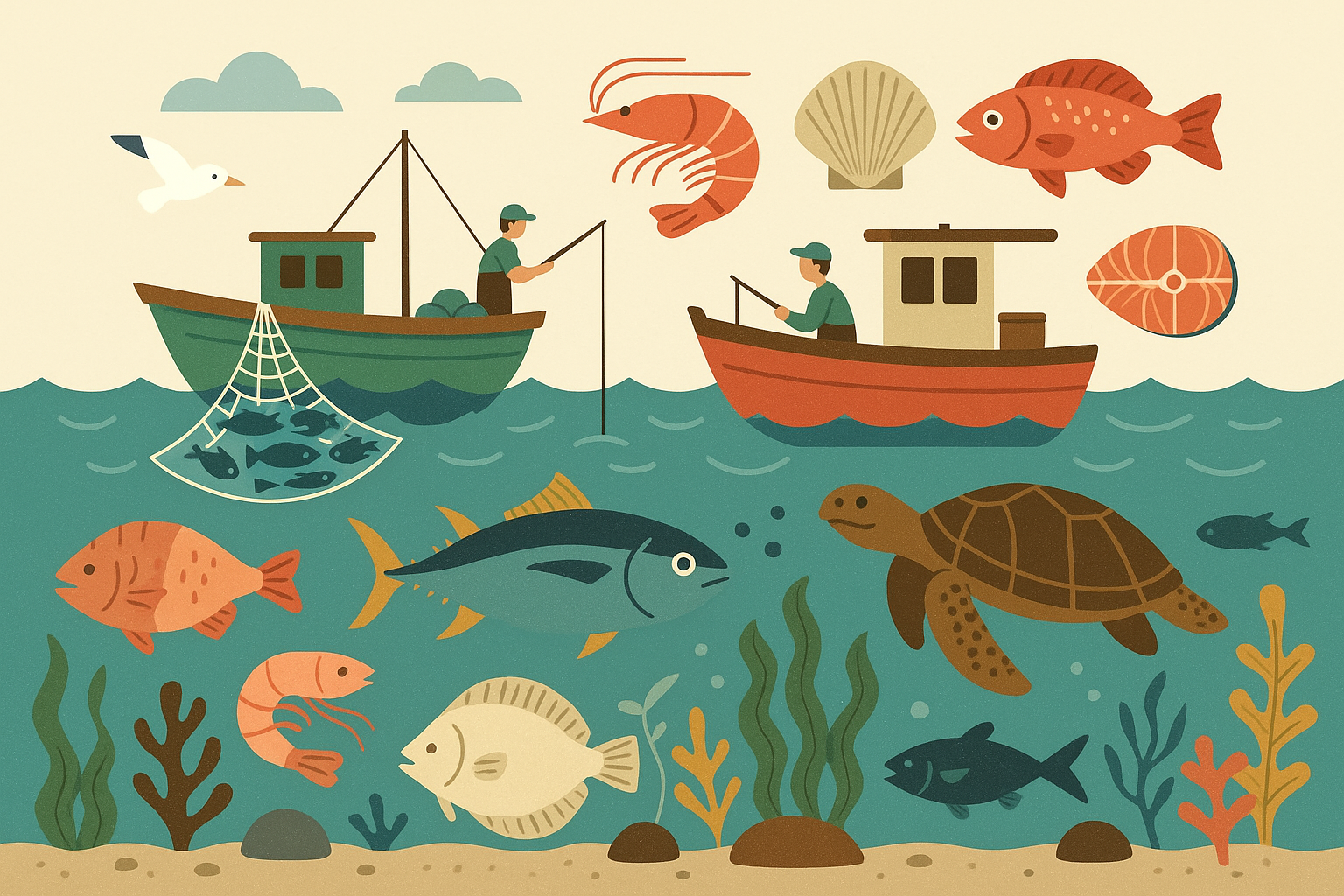
Seasonal Seafood Strategy
Timing your fish consumption with natural seasons and migration patterns ensures you’re getting seafood at peak nutritional content while supporting sustainable fishing practices. This approach requires some research but pays off in both nutrition and environmental impact.
Bivalve Maximization for Environmental Wins
Oysters, mussels, and clams are basically environmental superfoods that actually improve water quality while providing complete nutrition. These shellfish don’t need any feed and filter water as they grow, making them the most sustainable protein choice available.
My Research and Planning Process:
- Research local bivalve availability and harvest seasons
- Plan 2-3 bivalve-centered meals per week during peak seasons
- Learn basic preparation techniques to get the most nutrients
Small Fish Strategy That Works
Sardines, anchovies, and mackerel minimize mercury exposure while maximizing omega-3 content and environmental sustainability. Replacing big fish with small fish in most meals reduces environmental impact while often providing better nutrition.
What I Actually Do:
- Replace large fish with small fish in 70% of my fish meals
- Learn to prepare whole small fish for maximum nutrient extraction
- Track mercury exposure using hair mineral analysis Research shows that sardines provide 52% of your daily protein intake in a single serving, making them not only environmentally sustainable but also incredibly nutrient-dense for pescatarian meal planning.
Zero-Waste Pescatarian Protocols
Fish bones, heads, and shells contain valuable nutrients that align perfectly with pescatarian principles. Creating broths and extracting beneficial compounds from these “waste” products maximizes nutrition while minimizing environmental impact.
Fish Bone Broth for Mineral Density
Fish bones create calcium and collagen-rich broths that support bone health without land animal products. This process extracts minerals that would otherwise be discarded while providing a nutrient-dense base for soups and stews.
Shrimp Shell Chitin Extraction
Shrimp shells can be processed into natural chitin supplements that support gut health and weight management. This DIY approach ensures you’re utilizing every part of your seafood while creating valuable health supplements.
Here’s my weekly sustainable seafood rotation:
Sardines: Very low environmental impact, very high nutrition, available year-round, very low mercury
Mussels: Actually improve water quality, high nutrition, best fall-spring, very low mercury
Wild Salmon: Medium environmental impact, very high nutrition, best summer-fall, low mercury
Anchovies: Very low environmental impact, very high nutrition, best spring-summer, very low mercury
Oysters: Actually improve water quality, high nutrition, best fall-winter, very low mercury
Mackerel: Low environmental impact, very high nutrition, best spring-fall, low-medium mercury
How to Not Waste Your Expensive Fish (Because We’ve All Been There)
I wasted so much fish in the beginning because I had no clue how to store it properly. My fridge became a graveyard of expensive salmon that went bad after two days. Proper meal preparation can make or break the nutritional value of your pescatarian meals, and I’ve experimented with various techniques to preserve and enhance the nutritional profile of fish and seafood across a full week.
After losing countless nutrients to improper storage and preparation methods, I developed these techniques that maintain the integrity of delicate omega-3 fatty acids while extending the shelf life of prepared pescatarian meals. The difference in both taste and nutritional value became immediately apparent.
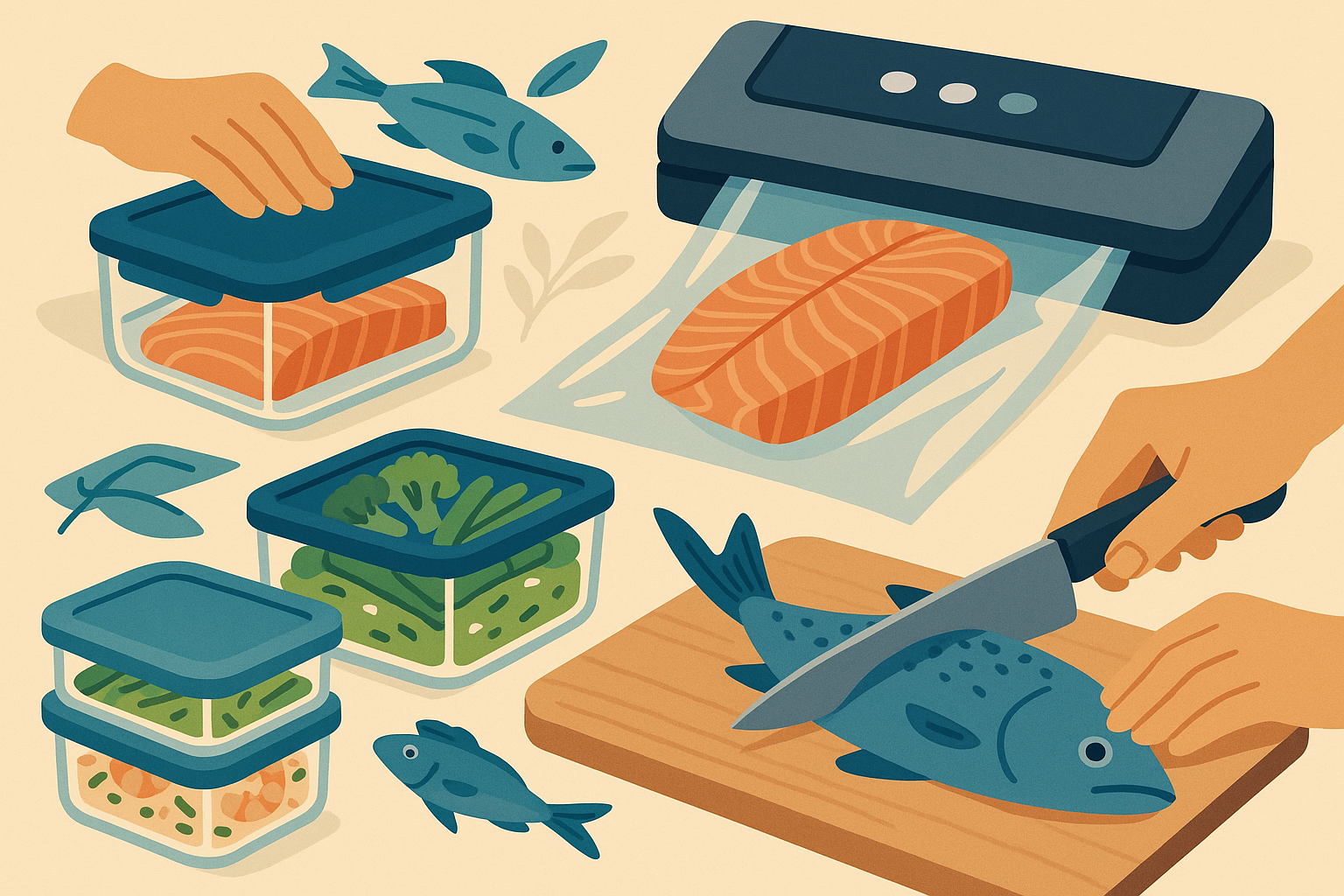
Vacuum-Sealed Marination Systems
Look, you don’t need to buy a fancy vacuum sealer, but if you want to level up your meal prep game, vacuum sealing speeds up fish marination while preventing oxidation of delicate omega-3 fatty acids. This technique allows for rapid flavor infusion without the nutrient loss that happens with traditional marination methods.
My Equipment and Process:
- Invest in a quality vacuum sealer and BPA-free bags
- Create marinades with antioxidant-rich herbs like rosemary and thyme
- Vacuum seal fish portions with marinades for 2-hour rapid infusion
Controlled Atmosphere Storage
Managing oxygen exposure during meal prep keeps fish fresh and prevents beneficial fats from going rancid. Glass containers with minimal air space and natural preservatives extend the nutritional life of prepared meals.
My Storage Protocol:
- Store prepared fish meals in glass containers with minimal air space
- Add vitamin E-rich oils (sunflower, safflower) as natural preservatives
- Label with preparation dates and consume within 72 hours
Modern pescatarian meal planning has evolved beyond simple fish-twice-a-week approaches. According to “A Couple Cooks”, successful pescatarian meal planners now use the “Pick 3” strategy, selecting just three healthy pescatarian dinner ideas per week and customizing them based on schedule and tastes, which allows for better nutrient timing and reduces meal planning overwhelm.
Enzyme-Enhanced Digestion Prep
Pre-treating fish with natural enzymes from pineapple and papaya improves protein digestibility and reduces potential digestive discomfort. This technique is particularly helpful for people who struggle with fish digestion.
My Enzyme Preparation Steps:
- Create enzyme marinades using fresh pineapple or papaya juice
- Marinate fish for 15-30 minutes before cooking (longer makes fish mushy)
- Monitor digestive comfort improvements over the 7-day cycle
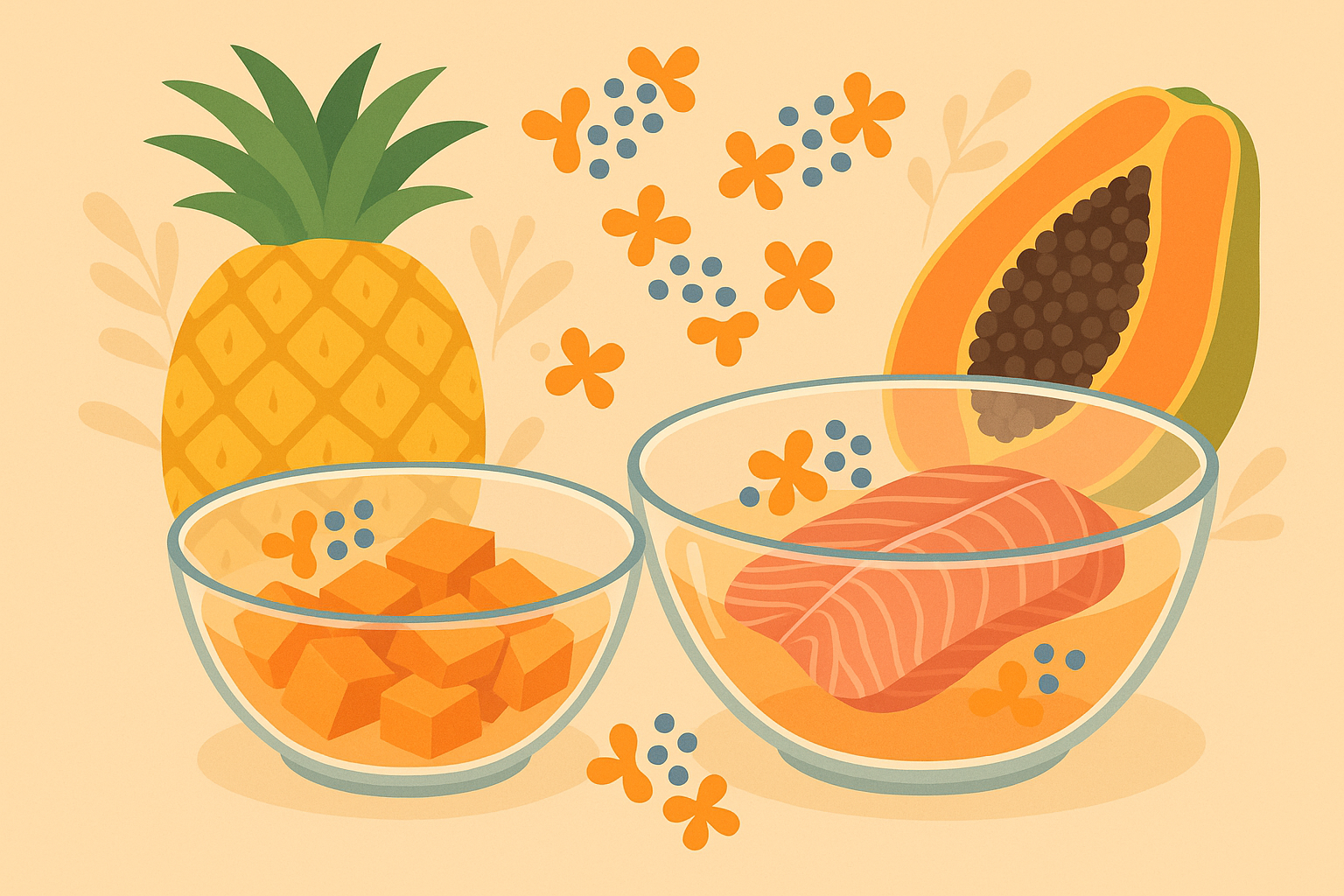
My Meal Prep Checklist:
- ☐ Vacuum seal fish portions with antioxidant marinades
- ☐ Prepare enzyme-enhanced proteins 24 hours ahead
- ☐ Store in glass containers with minimal air exposure
- ☐ Label all containers with prep dates and nutrient notes
- ☐ Rotate stock using FIFO (first in, first out) method
- ☐ Monitor fish freshness using visual and smell tests
- ☐ Keep backup plant proteins for extended freshness
Keto Fat Cycling That Actually Makes Sense
Staying in ketosis on a pescatarian diet requires strategic fat management that goes beyond just eating more fat. I’ve developed cycling protocols that prevent your body from adapting too quickly while ensuring optimal ketone production. Understanding how marine plants affect ketosis differently than land-based vegetables opens up new possibilities for meal variety.
The breakthrough came when I realized my body was adapting too quickly to consistent fat sources in my pescatarian meal plan. By rotating different fats throughout my 7-day cycle, I maintained higher ketone levels and avoided the energy crashes that plagued my earlier attempts at combining pescatarian eating with ketosis.
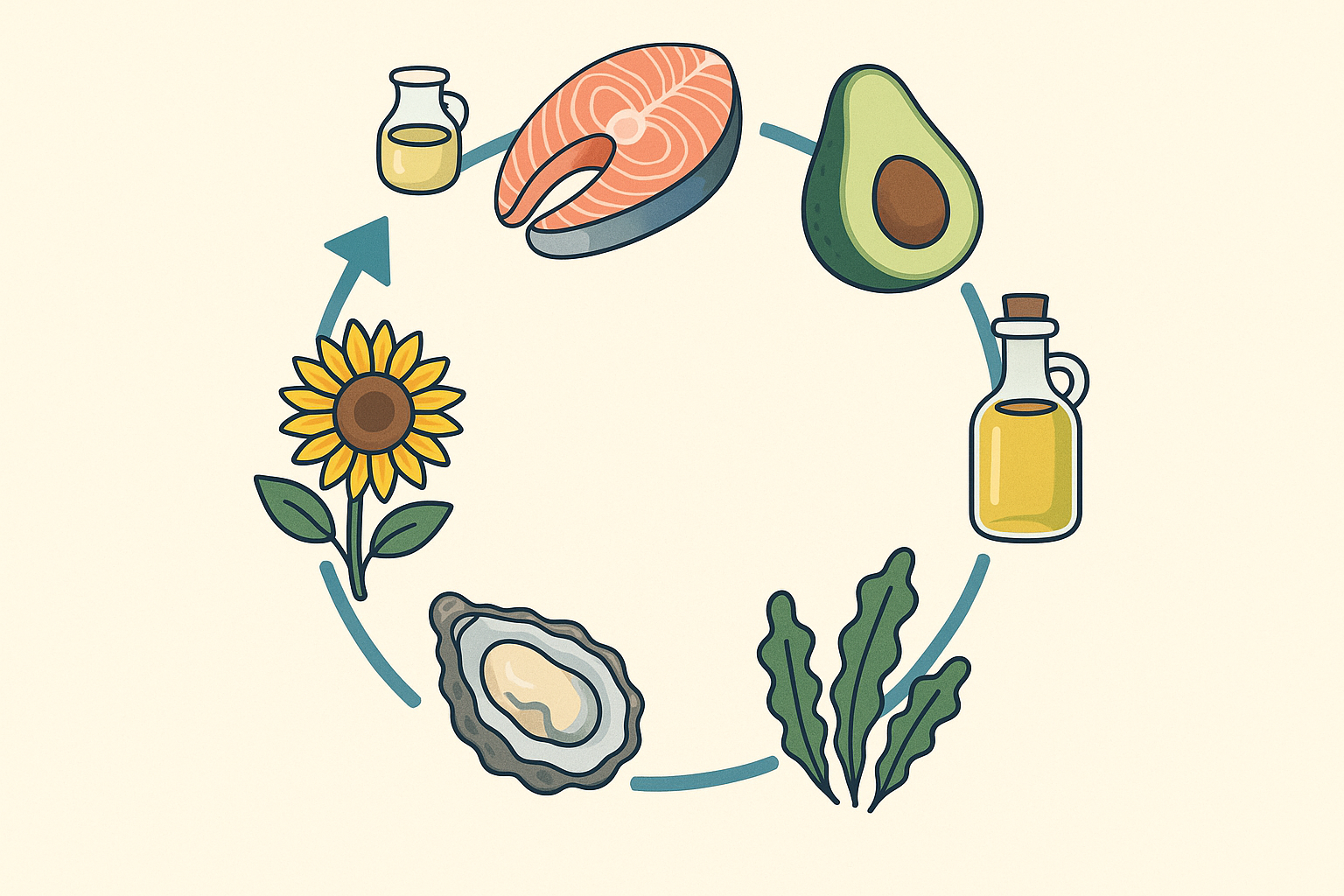
Sea Vegetable Carb Calculations
Marine plants have unique structures that affect blood sugar differently than regular vegetables. Kelp noodles and dulse flakes provide bulk and flavor without messing up ketosis, making them invaluable for pescatarian keto meal planning.
Kelp Noodle Glycemic Management
Kelp noodles are weird but they’re game-changers – they provide pasta-like satisfaction without affecting blood sugar, making them perfect for pescatarian keto meals. Monitoring your individual response helps optimize portion sizes for sustained ketosis.
My Testing Protocol:
- Replace traditional pasta with kelp noodles on days 1, 3, and 5
- Monitor blood glucose response using a continuous glucose monitor
- Adjust portion sizes based on individual ketone production
According to Samsung Food’s pescatarian meal planning research, a well-structured 7-day pescatarian meal plan based on a 1,600-calorie diet provides optimal nutritional balance while allowing for strategic fat cycling and ketosis maintenance.
Dulse Flake Umami Enhancement
Dulse flakes provide bacon-like savory flavor while supporting electrolyte balance in ketosis. Dehydrating them properly creates a versatile garnish that enhances both flavor and mineral content of pescatarian keto meals.
Strategic Fat Rotation
Rotating different fat sources throughout the week prevents your body from getting too efficient at processing any single source and maintains optimal ketone production. Each fat type provides unique benefits and keeps your metabolism guessing.
For those struggling with fat adaptation on their pescatarian meal plan, understanding how to do intermittent fasting properly can help accelerate the transition into ketosis while maintaining pescatarian principles.
Coconut Oil Cycling Days
Strategic coconut oil use on specific days boosts ketone production while balancing with fish-based fats. This cycling approach prevents adaptation while providing variety in fat sources.
Mediterranean Olive Oil Integration
Extra virgin olive oil on alternate days provides different fatty acid profiles and antioxidants that complement marine fats. This Mediterranean approach adds flavor variety while supporting overall health.
Walnut Oil Omega Balance
Walnut oil helps balance omega-6 to omega-3 ratios on days when fish consumption is lower. This plant-based omega source ensures consistent fatty acid intake throughout your 7-day cycle.
Jennifer, a 29-year-old software developer, struggled to maintain ketosis while staying pescatarian until she implemented a fat rotation schedule. She uses coconut oil on Mondays/Wednesdays/Fridays, olive oil on Tuesdays/Thursdays, and walnut oil on weekends. This simple rotation, combined with kelp noodles replacing regular pasta, helped her maintain consistent ketone levels above 1.0 mmol/L while enjoying varied, satisfying meals throughout her 7-day cycle.
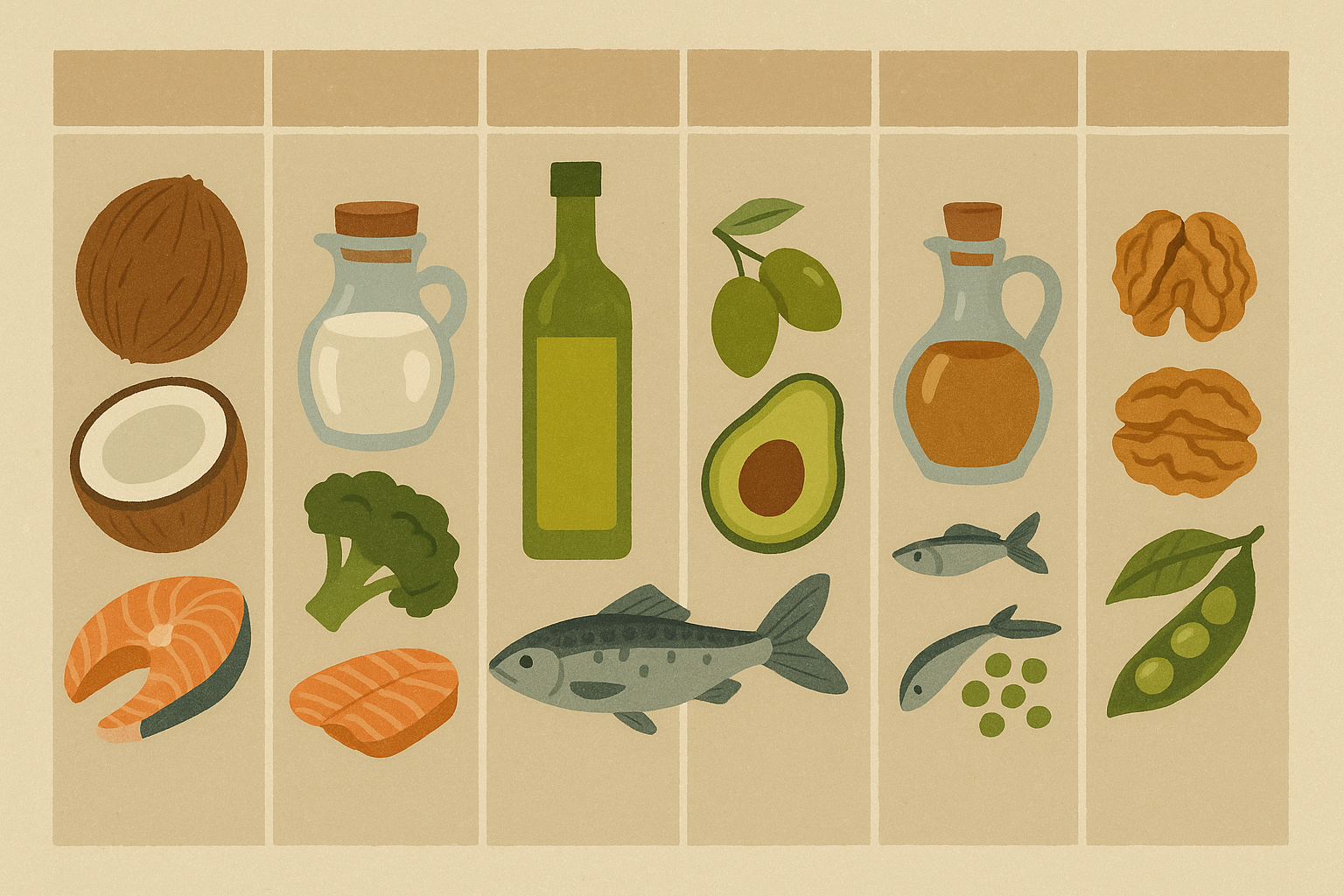
Speaking of optimizing your pescatarian journey, Organic Authority offers a range of algae-based supplements and marine-sourced collagen products that can fill nutritional gaps in your meal plan. Their commitment to sustainable, plant-forward nutrition aligns perfectly with the pescatarian lifestyle while ensuring you don’t miss out on essential nutrients.
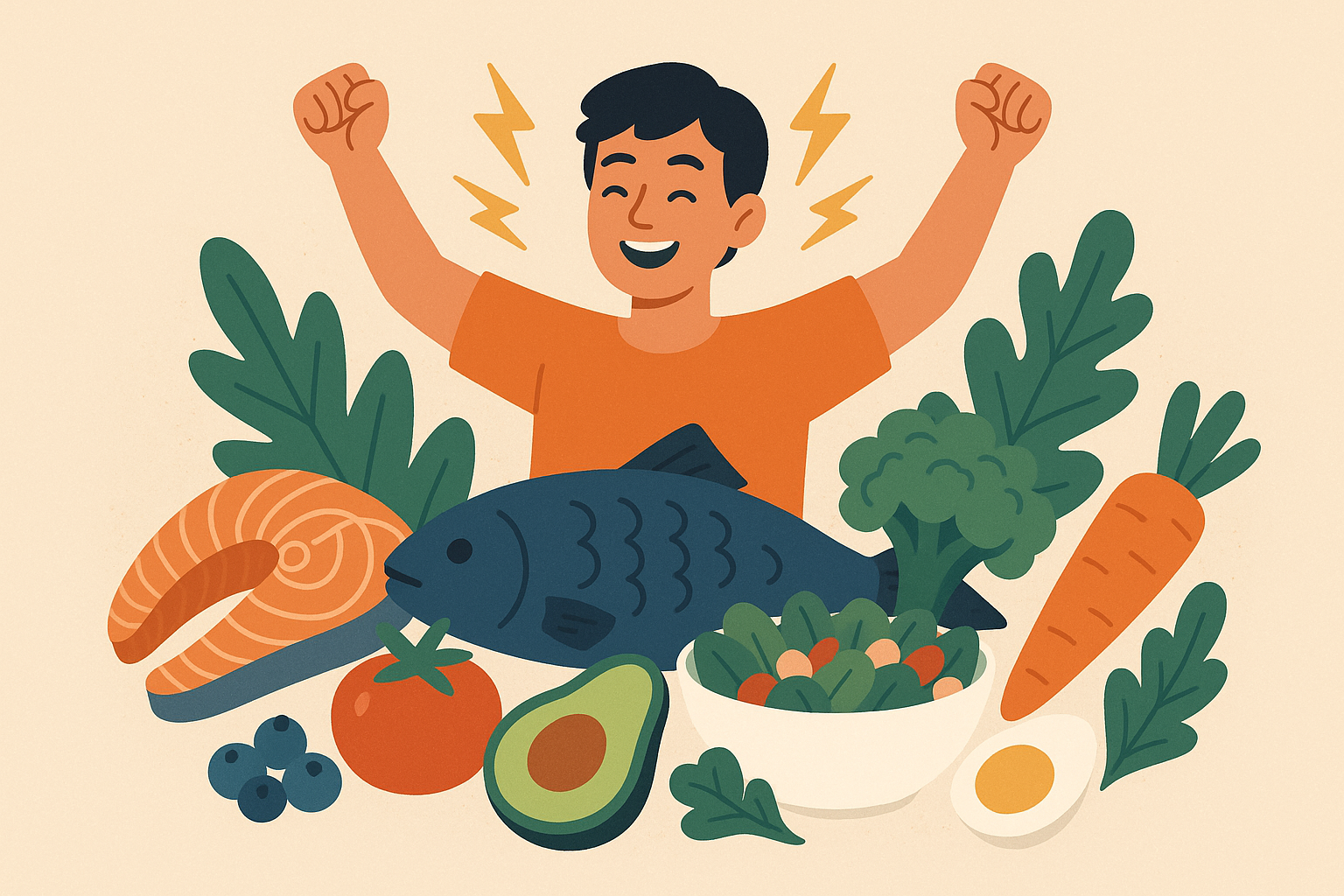
Final Thoughts
Creating a truly optimized 7-day pescatarian meal plan isn’t just about eating fish twice a week and calling it good. After experimenting with timing, preparation, and strategic food pairing, I’ve realized that when you eat matters just as much as what you eat. The beauty of this approach lies in working with your body’s natural rhythms rather than fighting against them.
What surprised me most was discovering how much your gut bacteria influence nutrient absorption from fish. That Jerusalem artichoke trick alone has transformed how I feel after seafood meals. And honestly, once you start timing your salmon around workouts and saving those omega-3 rich sardines for evening meals, the difference in energy levels becomes pretty obvious.
The environmental aspect adds another layer of satisfaction to this way of eating. Knowing that choosing bivalves and small fish actually supports ocean health while providing superior nutrition makes every meal feel like a win-win situation. Plus, those zero-waste techniques for using fish bones and shells? They’ve turned meal prep into something that feels almost magical.
For those ready to take their pescatarian journey even further, exploring homemade elderberry syrup recipes can provide additional immune support that complements the omega-3 benefits from your fish consumption.
If you’re feeling overwhelmed by all the timing and protocols, start with one thing. Maybe just try eating fish after your workouts for a week and see how you feel. Don’t try to overhaul your entire life based on one blog post – trust me, I’ve tried that approach and it doesn’t stick.
The pescatarian path doesn’t have to be complicated, but when you understand the why behind the what, every meal becomes an opportunity to support both your health and the planet. That’s pretty powerful stuff wrapped up in a simple 7-day meal plan.

